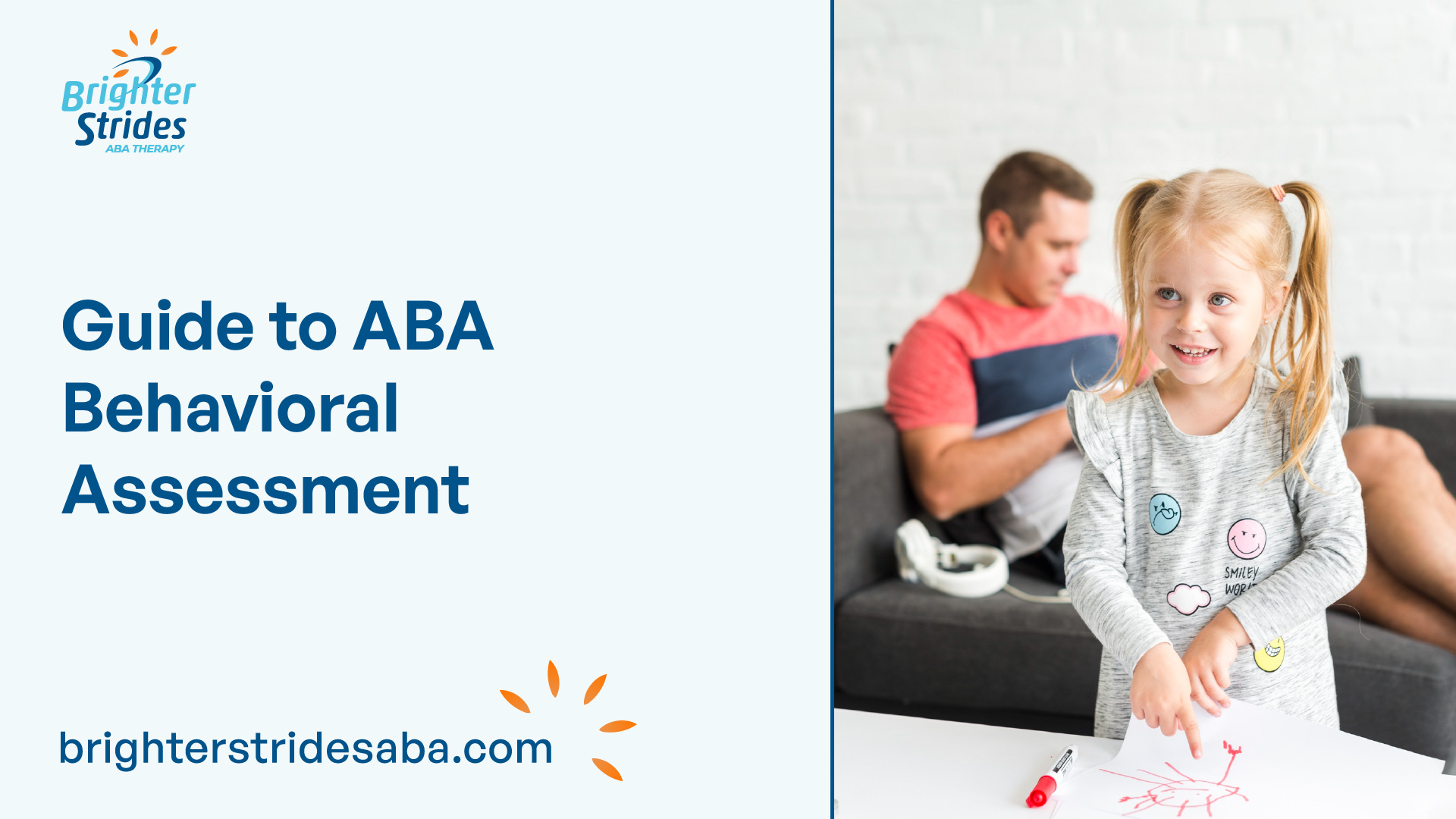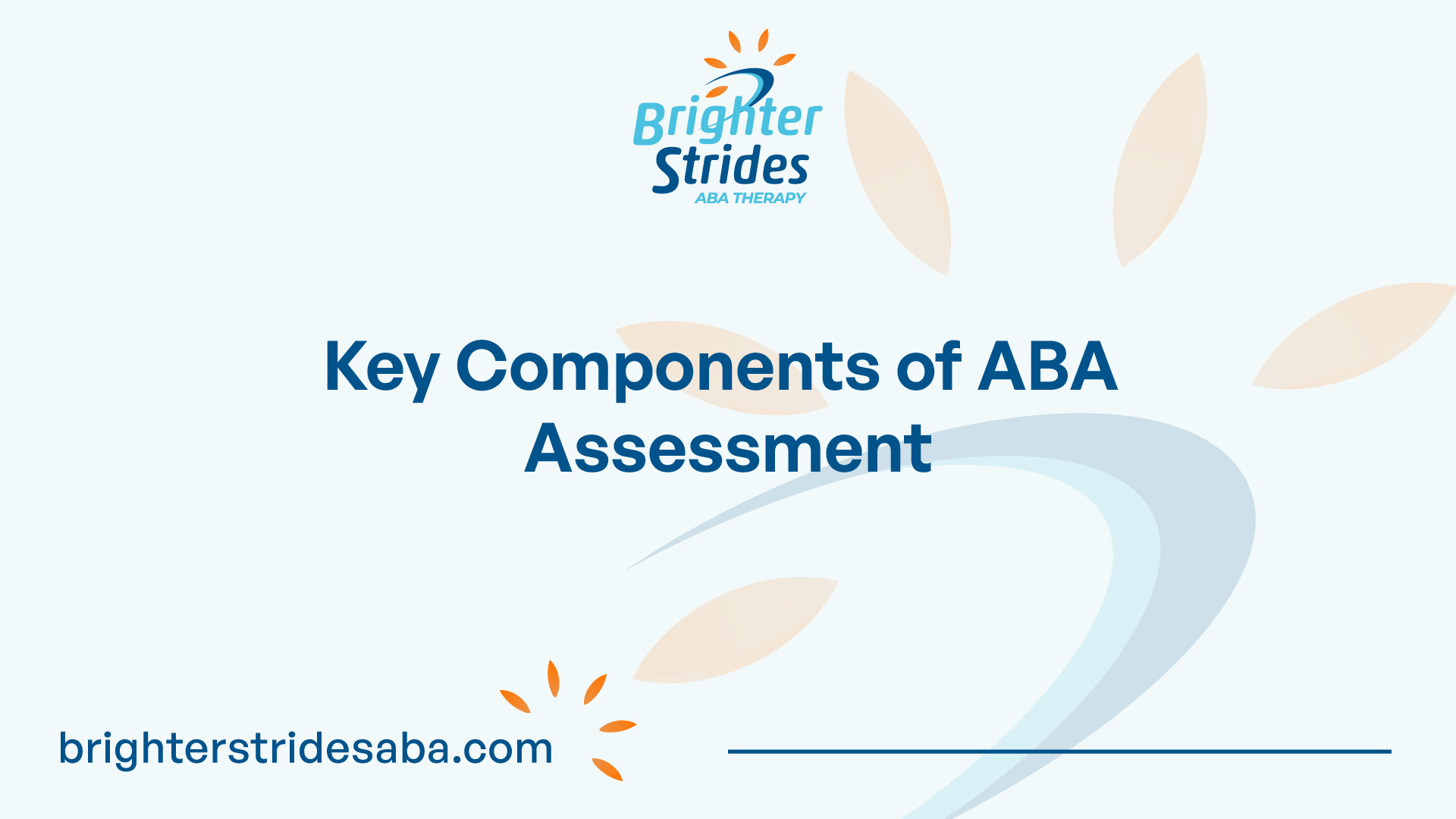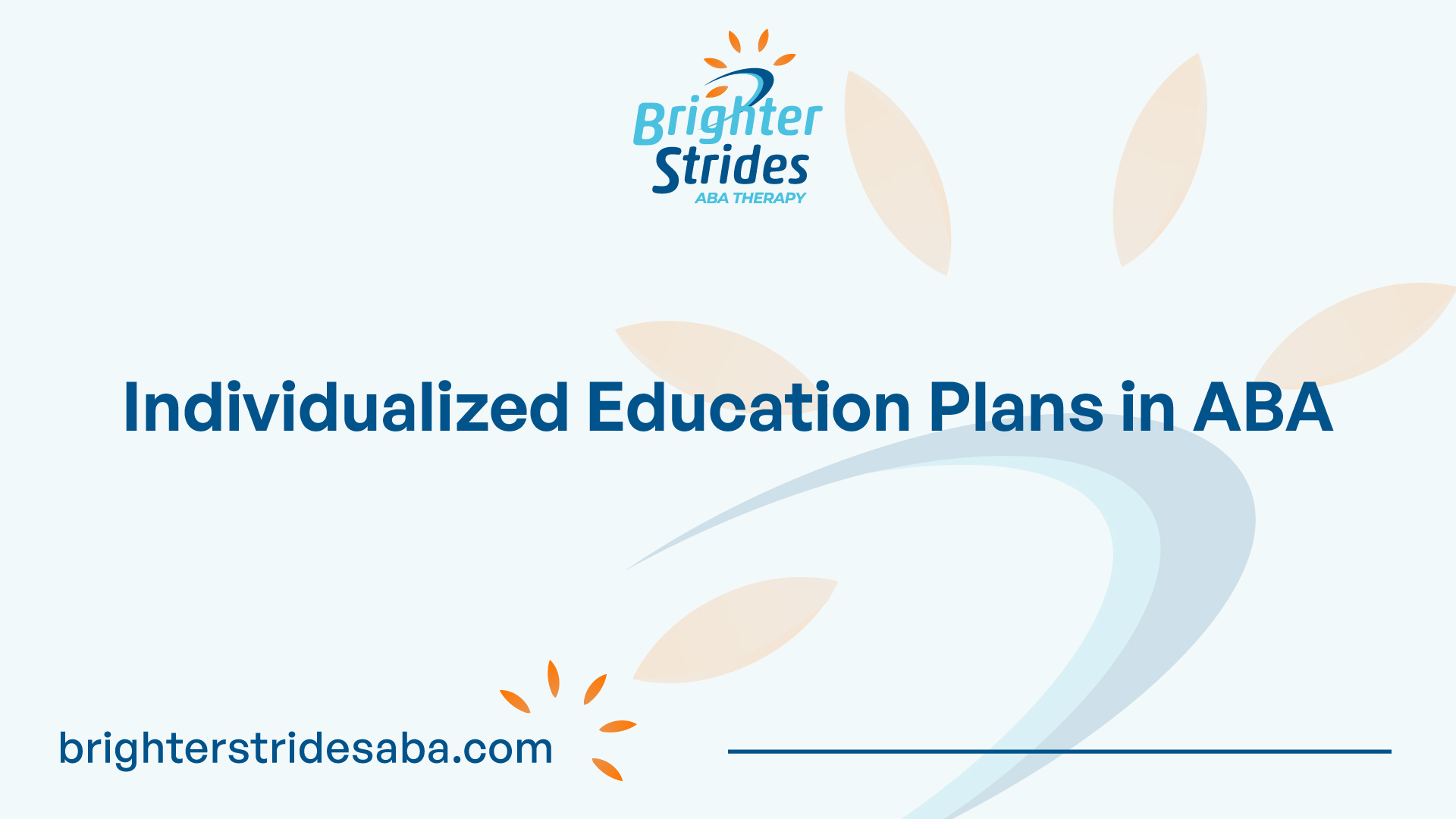
Understanding ABA Behavioral Assessment
In the field of Applied Behavior Analysis (ABA), behavioral assessment plays a critical role in understanding and addressing challenging behaviors. By employing various methods such as direct observations, interviews, checklists, and tests, ABA professionals can identify and define targets for behavior change [1]. This section will explore the basics of behavioral assessment and its purpose in ABA.
Basics of Behavioral Assessment
Behavioral assessment involves gathering information about an individual’s behavior to gain insight into the factors that influence it. This process typically includes direct observations of the behavior in various settings, interviews with caregivers or other relevant individuals, and the use of assessment tools such as checklists and tests.
The goal of behavioral assessment is to collect comprehensive and accurate data that helps identify the function(s) of the behavior, determine the antecedents (triggers) and consequences (reinforcement) associated with the behavior, and develop effective behavior intervention strategies [1]. By understanding the factors that contribute to behavior, ABA professionals can develop targeted interventions for behavior change.
Purpose of Behavioral Assessment
The primary purpose of behavioral assessment in ABA is to identify the function that a behavior serves in an individual’s life. This involves understanding why a behavior occurs, what reinforces it, and how to teach new behaviors and skills. By identifying the function of a behavior, ABA professionals can develop individualized intervention strategies that address the underlying causes of the behavior [1].
Behavioral assessment also helps in determining the appropriate reinforcement strategies to teach new behaviors and replace challenging behaviors with more adaptive alternatives. It allows ABA professionals to gather data, analyze patterns, and identify target behaviors that will guide the development of individualized education plans.
Functional behavior assessments (FBAs) are a critical component of behavioral assessment in ABA. FBAs provide valuable information about the function of behavior, helping to identify whether a behavior is maintained by escape, access, automatic reinforcement, or attention. This information is crucial for developing effective behavior intervention plans that address the underlying causes of the behavior [1].
In the next sections, we will explore the key components of ABA assessment, including functional behavior assessments and the phases of behavioral assessment.

Key Components of ABA Assessment
Understanding the key components of ABA assessment is essential for identifying and addressing behavioral challenges effectively. ABA, or Applied Behavior Analysis, utilizes various assessment techniques to gain insight into behavior and develop appropriate interventions. Two key components of ABA assessment are functional behavior assessments and the phases of behavioral assessment.
Functional Behavior Assessments
A functional behavior assessment (FBA) is a critical component of ABA assessment. It involves gathering information to understand the function, context, and determinants of challenging behaviors. By examining antecedents (events that precede the behavior), the behavior itself, and consequences (events that follow the behavior), ABA therapists can identify the function of the behavior. This assessment helps determine whether a behavior is maintained by escape, access, automatic reinforcement, or attention [1].
The information gathered through a functional behavior assessment informs the development of targeted interventions. By understanding the function of challenging behaviors, ABA therapists can design strategies to address the underlying causes and promote positive behavior change. This assessment is a dynamic process that involves ongoing data collection and analysis to guide intervention strategies [2].
Phases of Behavioral Assessment
Cooper, Heron, & Heward (2014) outlined five phases of behavioral assessment in applied behavior analysis [1]. These phases provide a systematic approach to understanding behavior and developing effective intervention strategies:
- Screening: The screening phase involves gathering preliminary information about the individual and their behavior. This helps identify areas of concern that require further assessment.
- Defining the Problem: In this phase, the behavior of interest is clearly defined and described. A clear understanding of the behavior allows for accurate data collection and analysis.
- Functional Assessment: The functional assessment phase aims to determine the function of the behavior. This involves conducting a functional behavior assessment (FBA) to identify the antecedents, behavior, and consequences that maintain the behavior.
- Treatment Planning: Based on the information gathered during the functional assessment, a treatment plan is developed. The plan outlines specific goals and intervention strategies to address the challenging behavior.
- Evaluation: The evaluation phase involves monitoring the effectiveness of the intervention strategies implemented. Data collection and analysis are crucial during this phase to assess progress and make any necessary adjustments to the treatment plan.
By following these phases, ABA practitioners can systematically assess behavior, identify functional relationships, and develop individualized intervention plans. This comprehensive approach ensures that interventions are tailored to the unique needs of each individual.
Understanding the components of ABA assessment, including functional behavior assessments and the phases of behavioral assessment, provides a foundation for effective behavior analysis and intervention. These assessments help identify the function of challenging behaviors and guide the development of targeted strategies to support positive behavior change.
Tools in ABA Behavioral Assessment
When it comes to conducting a comprehensive ABA behavioral assessment, several tools and techniques are utilized to gather valuable information about an individual’s behavior and develop effective treatment plans. In this section, we will explore three key tools commonly used in ABA behavioral assessment: Functional Behavior Assessment (FBA), Discrete Trial Training (DTT), and Pivotal Response Treatment (PRT).
Functional Behavior Assessment (FBA)
Functional Behavior Assessment (FBA) is a crucial tool in ABA therapy. It aims to identify the function of challenging behaviors and determine why they occur. By examining antecedents, behavior, and consequences, ABA therapists can gain insight into the purpose or function of the behavior. This information is then used to design targeted interventions tailored to the individual’s specific needs and goals.
FBA provides valuable information on the function of behavior, helping to identify whether a behavior is maintained by escape, access, automatic reinforcement, or attention. By understanding the underlying function of a behavior, ABA therapists can develop effective behavior modification strategies and intervention techniques to address the behavior and teach more appropriate alternatives.
Discrete Trial Training (DTT)
Discrete Trial Training (DTT) is a structured teaching method commonly used in ABA therapy, particularly in early intervention programs for children with Autism Spectrum Disorder (ASD). DTT breaks down complex skills into smaller, more manageable components. It involves breaking down tasks into discrete trials and providing prompts, cues, or reinforcement to teach specific skills or behaviors [3].
DTT focuses on repetition and reinforcement to promote skill acquisition. Each trial consists of a specific instruction or cue, a response from the individual, and feedback or reinforcement. This systematic approach helps individuals with ASD learn new skills and behaviors in a structured and predictable environment.
Pivotal Response Treatment (PRT)
Pivotal Response Treatment (PRT) is a naturalistic intervention approach within ABA therapy that targets pivotal areas of development. It aims to increase motivation, initiations, and self-management skills, which can have a positive impact on various aspects of an individual’s life. PRT focuses on teaching pivotal behaviors that serve as the foundation for a wide range of other skills.
PRT utilizes naturalistic teaching strategies and incorporates the child’s interests and motivations into the therapy sessions. It aims to promote active engagement, communication, and social interaction. PRT provides opportunities for the child to take the lead and make choices, enhancing their sense of control and autonomy during the learning process. By targeting pivotal behaviors, PRT can have a ripple effect, leading to improvements in other areas of development.
By utilizing tools such as Functional Behavior Assessment (FBA), Discrete Trial Training (DTT), and Pivotal Response Treatment (PRT), ABA therapists can comprehensively assess behavior, develop individualized education plans, and implement effective treatment strategies. These tools play a significant role in understanding and addressing the unique needs of individuals with Autism Spectrum Disorder (ASD) and other behavioral challenges.

Individualized Education Plans in ABA
Importance of Assessments
In the field of Applied Behavior Analysis (ABA), assessments play a crucial role in developing individualized education plans (IEPs) for individuals with autism and other developmental disorders. ABA professionals utilize assessments to gather data, analyze patterns, and identify target behaviors, all of which inform the creation of effective and tailored intervention plans.
Assessments are essential for understanding the unique needs and challenges of each individual. By conducting thorough assessments, ABA practitioners can gain insights into the function, context, and determinants of behaviors. This information allows them to design interventions that are specific, measurable, achievable, relevant, and time-bound (SMART goals), ultimately leading to meaningful progress [2].
To create comprehensive IEPs, ABA professionals employ various assessment tools that target different areas of development. These tools help identify strengths and areas of improvement, guiding the selection of appropriate intervention strategies. Let’s explore some commonly used assessment tools in ABA.
Assessment Tools in ABA
- Assessment of Basic Language and Learning Skills – Revised (ABLLS-R): The ABLLS-R is a comprehensive tool that breaks down language and learning skills into smaller, more specific components. It allows ABA professionals to track progress in areas such as receptive and expressive language, social interaction, self-help skills, and motor skills [2].
- Verbal Behavior Milestones Assessment Placement Program (VB-MAPP): The VB-MAPP evaluates language, learning, and social skills across various domains, including manding (requesting), tacting (labeling), listener responding, social behavior, and play skills. It assists in identifying language deficits and determining appropriate intervention targets.
- Promoting the Emergence of Advanced Knowledge (PEAK): The PEAK assessment focuses on language and cognition skills. It evaluates receptive language, expressive language, conversation skills, and problem-solving abilities. By identifying areas of strength and improvement, the PEAK assessment helps tailor interventions to the individual’s specific needs.
These assessment tools, among others, provide valuable information for developing effective intervention plans. They help ABA practitioners identify the current skill levels of individuals, set meaningful goals, and monitor progress over time. By regularly reassessing individuals, ABA professionals can make informed adjustments to intervention strategies and ensure continued growth and development.
In conclusion, assessments are a cornerstone of ABA practice, playing a vital role in the creation of individualized education plans for individuals with autism and other developmental disorders. By utilizing assessment tools, ABA professionals can gather valuable data and insights, leading to targeted interventions that promote progress and improve outcomes.
ABA Therapy Components
ABA Therapy, or Applied Behavior Analysis Therapy, is a comprehensive approach to treating individuals with autism spectrum disorder (ASD) by focusing on behavior modification and skill development. ABA Therapy consists of several key components, including specific steps and active family involvement.
ABA Therapy Steps
ABA Therapy typically follows a set of steps to ensure a systematic and effective approach to treatment. While individual programs may vary, the following steps are commonly incorporated:
- Assessment: The first step in ABA Therapy involves conducting a thorough assessment of the individual’s behavior and skills. This helps identify areas of strength and areas that require intervention. Various assessment tools, such as direct observations and interviews, may be used to gather data and establish baseline levels of behavior.
- Target Selection: Based on the assessment results, specific target behaviors are selected for intervention. These behaviors are chosen based on their relevance to the individual’s daily life and overall goals. Target behaviors may include communication skills, social interactions, self-help skills, and more.
- Goal Setting: Clear and measurable goals are established for each target behavior. These goals are tailored to the individual’s needs and abilities, ensuring they are realistic and achievable. The goals serve as a roadmap for the therapy, providing direction for the interventions and progress monitoring.
- Intervention Planning: ABA therapists develop detailed intervention plans that outline the strategies and techniques to be used for each target behavior. These plans are individualized and may include various ABA strategies and techniques, such as prompting, reinforcement, shaping, and modeling. The interventions are designed to teach and reinforce desired behaviors while reducing challenging behaviors.
- Implementation: ABA Therapy is implemented through regular sessions with a trained therapist. During these sessions, the therapist utilizes the planned interventions to teach and reinforce target behaviors. The therapist closely monitors the individual’s progress, makes necessary adjustments to the interventions, and collects data to track changes in behavior over time.
- Generalization: A crucial aspect of ABA Therapy is promoting the generalization of learned skills across different environments and settings. Therapists work with the individual and their family to ensure that new skills and behaviors are practiced and maintained outside of the therapy sessions. Generalization promotes the application of learned skills in real-life situations.
- Evaluation: Regular evaluation and ongoing assessment are essential components of ABA Therapy. The therapist continuously monitors progress, collects data, and evaluates the effectiveness of the interventions. This allows for adjustments to be made as needed and ensures that the therapy remains tailored to the individual’s changing needs.
Family Involvement in ABA
Family involvement is a vital component of ABA Therapy. Parents, family members, and caregivers are encouraged to actively participate in the therapy process. They are provided with training on basic ABA principles and strategies to support the child’s progress.
By involving the family, the therapy extends beyond the therapy sessions and into the child’s natural environment. The family members learn to implement ABA techniques and interventions consistently, reinforcing the target behaviors and promoting generalization. This collaboration between the therapist and the family enhances the overall effectiveness of the therapy and helps facilitate long-term success.
Family involvement also empowers parents and caregivers with the knowledge and skills to address challenging behaviors, effectively communicate with their child, and create a supportive and structured environment. It promotes a collaborative approach to the child’s development, ensuring that the skills and behaviors learned during therapy are integrated into their daily routines.
The active involvement of the family in ABA Therapy creates a comprehensive and holistic approach to treating individuals with ASD. It fosters a supportive network and empowers the family to continue supporting the child’s progress even after the therapy sessions have ended.
In our next sections, we will explore the importance of data collection in ABA Therapy and the various methods used for collecting and analyzing data.
Data Collection in ABA
Data collection is a critical aspect of Applied Behavior Analysis (ABA) and plays a key role in understanding and modifying behaviors. ABA practitioners employ various methods to collect accurate and reliable data to inform treatment plans and measure progress. In this section, we will explore two important aspects of data collection in ABA: digital data collection and ABA data collection methods.
Digital Data Collection
In recent years, digital data collection has become increasingly prevalent in ABA practices. According to a 2022 report by CentralReach, approximately 50% or more ABA practices utilize digital methods for data collection in 2021. Digital data collection offers several advantages over traditional paper-and-pencil methods. It allows for real-time data entry, automatic data analysis, and enhanced data security.
By utilizing digital platforms and applications, ABA practitioners can efficiently record and track data during therapy sessions. This digital approach streamlines the data collection process, allowing practitioners to focus more on the individual they are working with and make real-time observations. Moreover, digital data collection promotes accuracy by eliminating the potential for human errors during manual data entry.
ABA Data Collection Methods
ABA utilizes various data collection methods to capture information about behaviors and their antecedents and consequences. Here are some commonly used methods:
- Continuous Measurement: Continuous measurement involves documenting each occurrence of a behavior using methods such as frequency, rate, duration, and latency. This approach provides a comprehensive understanding of behavior when a complete record is needed.
- Duration Recording: Duration recording is suitable for tracking and documenting behaviors that have a distinct beginning and ending or occur at a high frequency. Practitioners measure the length of the behavior using a stopwatch or other timing instruments to record how long a client engages in a particular behavior [4].
- Permanent Product Recording: Permanent product recording focuses on the concrete objects or outcomes resulting from a behavior. This method quantifies the beneficial or harmful behaviors by counting completed or missed/uncompleted tasks, providing insight into a client’s engagement and progress.
- Antecedent-Behavior-Consequence (ABC) Method: The ABC method involves identifying the antecedent (stimuli or activity preceding a behavior), the behavior itself, and the consequence (event following the behavior). This approach helps identify the root cause of a behavior, aiding in the development of effective treatment plans.
Each data collection method serves a specific purpose and provides valuable information for behavior analysis and intervention planning. ABA practitioners carefully select and implement the appropriate method based on the behavior being assessed and the goals of the intervention.
Accurate and consistent data collection is crucial in ABA. It enables practitioners to make informed decisions, track progress, and evaluate the effectiveness of interventions. By leveraging digital data collection tools and utilizing various methods, ABA practitioners can gather meaningful data to guide their strategies and promote positive behavior change. For more information on ABA strategies and treatment plans, check out our articles on aba strategies and aba treatment plans.

 We've just released an article!
Check out our blog!
We've just released an article!
Check out our blog!



